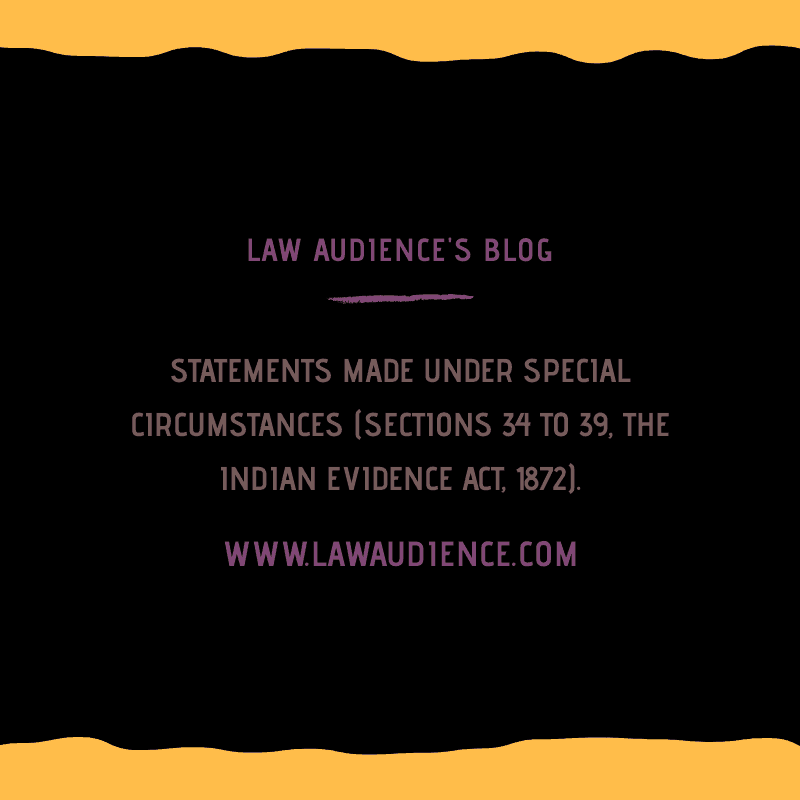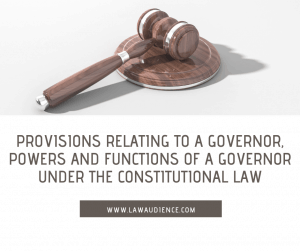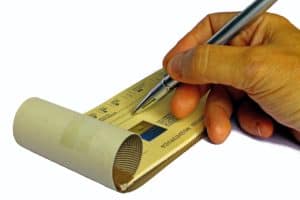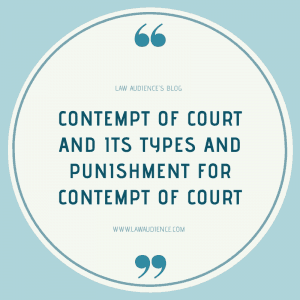AUTHORED BY: MS. NATASHA JAIN, LL.B, STUDENT AT NEW LAW COLLEGE, BHARATI VIDYAPEETH DEEMED UNIVERSITY & RESEARCH WRITER AT LAW AUDIENCE.
I. INTRODUCTION:
The Evidence Act came into force on 1st September 1872. It consists of 11 Chapters and 167 Sections. In India, Law of Evidence is an essential part of both the systems i.e. Civil and Criminal. Before the enactment of this law, there were no codified rules or regulations for captivating evidence. But, after the enactment of Evidence Law, the whole Indian Judiciary System has changed. This act is based upon the English Law of Evidence. It is not extensive in nature. The term Evidence is derivative of the Latin word “Evideari”, and the meaning of this is to prove or show clearly. This act is applicable to all over India except the state of Jammu & Kashmir. And, this act is only related to the proceedings of Court. There are various types of evidence which comes under this Act. This short article is focused on explaining the concept of statements made under special circumstances which are mentioned under Sections 34-39 and Chapter II of Indian Evidence Act, 1872.
II. STATEMENTS MADE UNDER SPECIAL CIRCUMSTANCES:
a) SECTION 34 OF THE INDIAN EVIDENCE ACT[1]:
In this portion of the Chapter, there are two general classes of statements which have been dealt under this:
(A) Entries in books of accounts regularly kept in the course of business.
(B) Entries in public documents, or in a document of a public character.
Both the classes of statements are relevant and admissible. It doesn’t matter whether the person who made them is called as a witness or not or whether the person is a party to the suit or not. According to the English Common Law, the first class of the statements are generally not admissible excluding in the cases in which the deceased person has made such entries against interest or in the course of business. It is the general rule that a person’s own statement is not used as evidence for him, but in some cases, it can be used as corroborative evidence.
Section 34 of the Indian Evidence Act states that “Entries in books of accounts including those maintained in an electronic form is relevant when it is regularly kept in the course of business.
The expression “book of accounts” means a book in which businessman; traders or merchants generally maintained their accounts. Some of the essentials on which this principle is based are:
- It only guarantees their accurateness if it is the routine and habit of a person of making such books on a regular basis.
- It creates imprecision if the habit is influential.
- A daily process of a transaction of business is recorded in such books, that’s why it is definite to be identified and corrected the error.
- Misstatements cannot be made in such books with the exception of by an organized and complete plan of misrepresentation.
The statute rests upon the thought that the entry or other writing was the business of writer. And, there should be no intention of misrepresentation, the writer must have full awareness and there is the strongest incredibility of fact.
b) SECTION 35 OF THE INDIAN EVIDENCE ACT[2]:
Section 35 of the Indian Evidence Act says about the Entries in public record and official book. An entry in public or other official book, register or record or an electronic record, stating a fact in issue or relevant fact, and made by a public servant in the discharge of his official duty, or by any other person in performance of a duty specially enjoyed by the law of the country in which such book, register, or record or an electronic record is kept, is itself a relevant fact.
SCOPE OF SECTION 35:
The basic principle of this Section is public record. The evidence is said to be acceptable if public or other official book is register or record and preserved by the public officer in the act of official duty. Such documents or public records have got an evidentiary assessment.
Before making any document admissible following conditions must be fulfilled:
- An entry must be kept in check in public or official record.
- The entry must be prepared by a public servant.
- The entry must be prepared by a public servant in satisfying his official duties.
- The entry must be stated a fact in issue or relevant fact.
SUBJECT MATTER OF SECTION 35:
It is the public responsibility of an individual who maintained the register for creating such entries after filling of their certainty; this is the only belief on which the entries in a register are acknowledged as evidence. The public records are maintained only for the advantages of the public that’s why the person who is filling such public responsibilities have been bestowed with an astonishing mark of assurance. These are usually verified by the production of certified copy in a case where there is a question of proof arises. It is not essential to call the person to court and observe him on oath or cross-examine him. It is presumed that all the documents and records which are maintained by a public servant are true and correct.
In Ku. Anita, Minor v. Atal Bihari And Anr[3], the Court held that a birth entry in the Register of Births and Deaths can be taken as the basis for determining the age of the accused. Court further held that the opinion of a radiologist cannot be preferred over such an entry.
c) SECTION 36 OF THE INDIAN EVIDENCE ACT[4]:
Section 36 of the Evidence Act says about Statements in maps and charts. Section 36 includes two types of maps and charts:
- The printed maps or charts usually accessible for public sale.
- The maps and plans which are made under the power of Government.
The first category of maps and charts only relevant if they are for a public purpose otherwise their accurateness may be confronted. The second kind of maps and charts are presumed to be relevant because it is made under the authority of Government.
d) SECTION 37 OF THE INDIAN EVIDENCE ACT[5]:
Section 37 of the Evidence Act says about Statements in acts of the Parliament of England or India. Statements of any facts of a public nature (as to the presence of which the Court has to form a view) made in a performance confined in any Act of Parliament of the U.K. or in any Central or Provincial Act or a state act are relevant facts.
e) SECTION 38 OF THE INDIAN EVIDENCE ACT[6]:
Section 38 of the Evidence Act says about the Law of a foreign country. When the Court has to form a view as per to law of any country, any declaration of the law of that country confined in a printed or issued book under the power of the Government of such country and any report of a ruling of the Courts of such country is relevant.
f) SECTION 39 OF THE INDIAN EVIDENCE ACT[7]:
Section 39 of the Evidence Act says that “What Evidence to be given when statement forms part of a conversation, document, electronic record, book or series of letters or papers”. When any statement of which evidence is given forms part of a longer statement, or of a conversation or part of an isolated document, or is contained in a document which forms part of a book, or is contained in part of electronic record or of a connected series of letters or papers, evidence shall be given of so much and no more of the statement, conversation, document, electronic record, book or series of letters or papers as the Court considers necessary in that particular case to the full understanding of the nature and effect of the statement, and of the circumstances under which it was made.
III.CONCLUSION:
In nutshell, it can be concluded that Sections 34 to 39 of The Indian Evidence Act, 1872, deal with the concept of statements made under special circumstances and it is also evident that it is a confusing task to find the proof. If there are no laws leading evidence, then it becomes difficult to find out the truth. Consequently, there are harsh procedures that control the nature of evidence, the superiority and the genuineness of the evidence. The acts have acknowledged that definite kinds of documents and definite objects of proof have more weightage than others, and would prove the statement credible. This can be done by making appropriate documents.
[1] Section 34, The Indian Evidence Act, 1872 (India).
[2] Section 35, The Indian Evidence Act, 1872 (India).
[3] 1993 CriLJ 549 (India).
[4] Section 36, The Indian Evidence Act, 1872 (India).
[5] Section 37, The Indian Evidence Act, 1872 (India).
[6] Section 38, The Indian Evidence Act, 1872 (India).
[7] Section 39, The Indian Evidence Act, 1872 (India).



